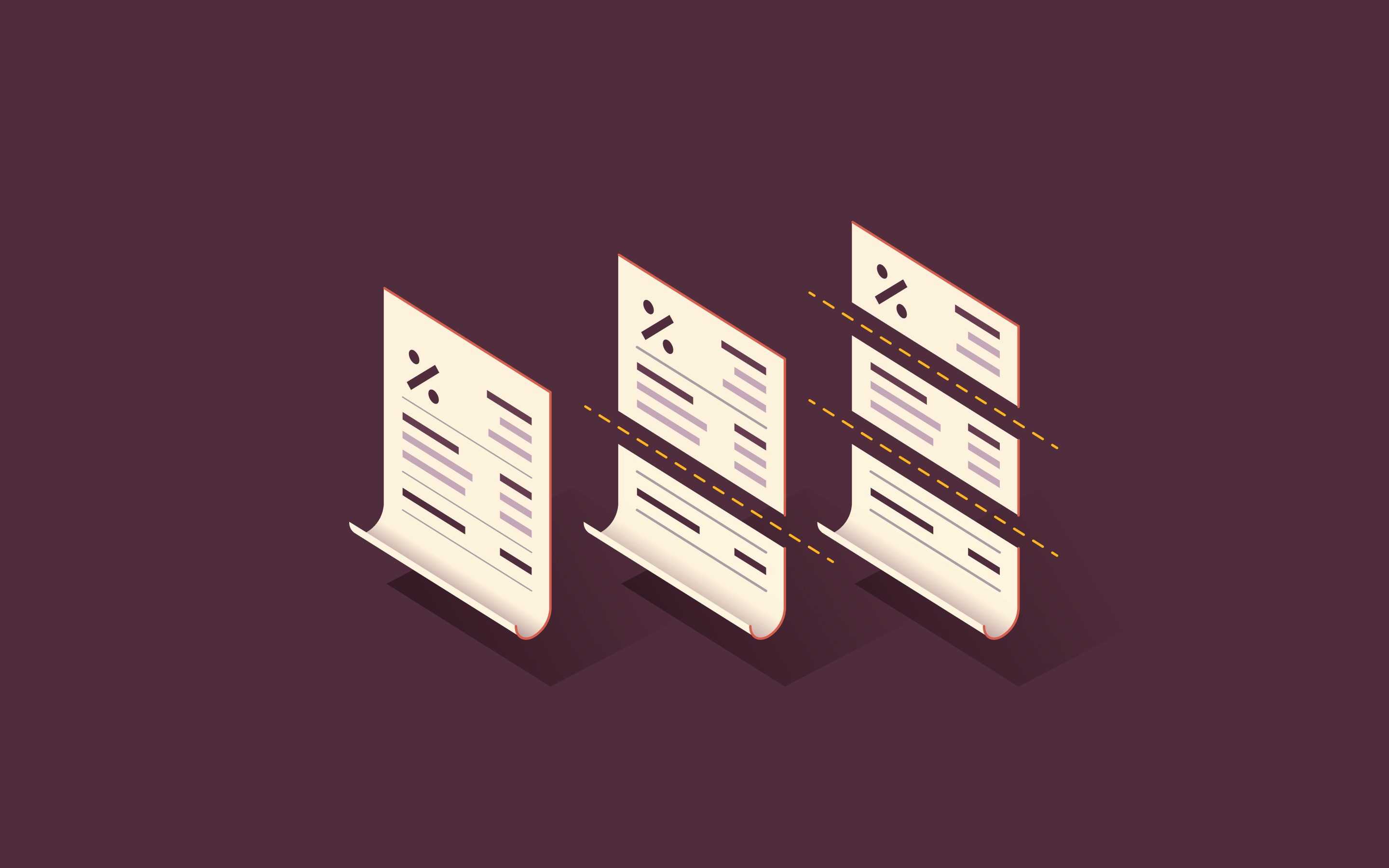IRS Form 941: How to Fill Quarterly Tax Returns
Completing Form 941, Employer’s Quarterly Federal Tax Return, can feel daunting, whether you’re a small business or a multi-state employer. It's a form that requires detailed information on your payroll taxes, including Social Security and Medicare withholdings, and mistakes or delays can have financial consequences.
In this guide, we help you understand the ‘why’ and ‘how’ of the entire filing process. We’ll walk you through each section of Form 941, from collecting the required information to submitting the completed form, so that you can feel confident in your compliance.
What is Form 941?
Form 941, or the Employer’s Quarterly Tax Return, is the form businesses use to report Social Security and Medicare taxes (FICA taxes), income taxes, and other payroll taxes withheld from employees’ paychecks to the US Internal Revenue Service (IRS).
The majority of businesses with employees will need to file Form 941 to ensure correct payment of federal withholding and their employer contributions, similar to how individuals file Form 1040. Unlike individuals, however, businesses must file their tax returns every quarter rather than annually.
Failure to file your Form 941 on time can have serious financial repercussions. The IRS assesses a penalty based on a percentage of the amount owed, and that percentage increases the longer you wait to file.
Who needs to file Form 941?
If your business pays wages to employees or withholds over $1,000 in FICA taxes, you must file a Form 941 with the IRS to report the amounts withheld.
Generally, if you previously filed a Form 941, you will continue to do so every quarter, regardless of whether you currently have employees. Some businesses without employees will still need to file Form 941. In this case, you’ll report that you paid no wages for the quarter.
Example 1: Sara runs a small business and lost her only two employees on May 2. She will still need to file Form 941 for the year's second quarter on July 31 and report any wages paid on May 1 or May 2.
Example 2: Sara has yet to succeed in replacing her employees by the end of October. She will still need to file a Form 941 for the third quarter and report that no wages have been paid.
Certain businesses that pay wages are exempt from filing Form 941 due to the specific nature of the work. These include:
- Seasonal employers.
- Employers of farm workers, such as planters, harvesters, salvagers, or ranch hands.
- Employers of household employees, such as nannies, cooks, and drivers.
Form 941 deadlines and important dates
You’ll need to file your business’ Form 941 no later than the last day of the business quarter in which the taxes are due:
- April 30 - for the first quarter of the financial year (February, March, April)
- July 31 - for the second quarter of the financial year (May, June, July)
- October 31 - for the third quarter of the financial year (August, September, October)
- January 31 - for the fourth quarter of the financial year (November, December, January)
If the deadline to file falls on a weekend or a federal holiday, the due date shifts to the next business day.
Remember, the deadline to file Form 941 and the deadline to make your tax deposits are different. Depending on the amount your business needs to pay, you’ll deposit your federal withholding taxes semi-weekly or monthly.
It’s important to file your Form 941 on time to avoid incurring penalties from the IRS. Starting from the day after the deadline, the IRS assesses a penalty of 5% of the amount you owe. That number goes up by an additional 5% for each month of delay for up to five months.
Months of delay
Percentage of amount owed
Less than one month
5% of the amount owed
One to two months
10% of the amount owed
Two to three months
15% of the amount owed
Three to four months
20% of the amount owed
Four to five months
25% of the amount owed
These penalties aren’t cumulative. That means if your business doesn’t pay until three months after the due date, the IRS doesn’t stack the previous 5%, 10%, and 15% penalties on top of the 20%. It does, however, charge interest, which means the longer you wait to pay the penalty, the more you’ll owe.
Example: ABC Corp. owes $10,000 in FICA, FUTA, and other payroll taxes for the first quarter of 2024. It submitted its deposit on May 7, one week after the April 30 deadline. ABC Corp. must now pay a late filing penalty of $500.
Example 2: ABC Corp. owes $10,000 in payroll taxes for the first quarter of 2024. Due to an oversight, the company only files its Form 941 on August 3rd. ABC Corp. must now pay a late filing penalty of $2,000.
How to fill out Form 941: 7 steps
For such an important document, Form 941 is straightforward—just six pages and five sections. Below, we guide you through the process from start to finish.
1. Gather the required information
Start by collecting all the necessary information to complete your business’ Form 941 as efficiently as possible.
First, verify important information about the business to help the IRS match your return to other filings you’ve made, such as W-2s and W-3s. You’ll also need to know who will sign the form on behalf of your business and if the company has a third-party representative authorized to speak to the IRS.
- Your employer identification number (EIN)
- Your business’ name and any trade names
- Your authorized signatory’s name and phone number
- Your third-party designee’s name and contact information, if applicable
Next, locate information about your workforce, wages paid, taxes withheld, and taxes paid. If you use an automated payroll system like Rippling, you should have easy access to everything you need, including:
- Total wages paid for the quarter
- Total number of employees
- Information on Adjustments or Tax Credits available
- Taxable Social Security and Medicare wages for the quarter
- Total amount of Social Security, Medicare, and federal income taxes withheld for the quarter
- Total amount of employment taxes for the quarter that you’ve already paid
- Monthly deposit schedule
2. Complete the header section
The first section of Form 941 asks for basic information to identify your business, like your EIN, business address, and any trade names.

3. Fill out Part 1: Wages and Taxes
In this section, you’ll input the information you retrieved from your payroll or accounting software about how many people your business employs, how much you paid them in wages, tips, or other compensation for the quarter, and how much income tax you withheld.

If you paid wages, tips, or other compensation exempt from federal withholding, check the box in Line 4 and skip to Line 6.
Otherwise, continue to Lines 5a through 5d to calculate the wages and tips subject to Social Security and Medicare withholding.
If your payroll system doesn’t track these amounts automatically, you can find them by reviewing your payment history in the Electronic Federal Tax Payment System (EFTPS).

Once you’ve made the calculations in Lines 5a through 5d and entered the amounts in Column 2, add them to find your total Social Security and Medicare taxes owed. Enter this number in the box on Line 5e.
Only complete Line 5f if you receive a notice from the IRS about taxes due on unreported tips.
Add together Lines 3, Lines 5e, and 5f to find your total tax liability before any adjustments or credits.

Use Lines 7 through 10 to apply any adjustments to the total taxable wages and tips due to fractions of cents, sick pay, or group-term life insurance. This portion of Form 941 typically applies when an insurance company reimburses you for wages paid to an employee on short-term leave for a qualifying disability.

Once you’ve entered any adjustments in Lines 6 through 9, add them together and subtract the total from Line 5e to find your total tax liability after adjustments. Enter this amount at Line 10.
If your business engages in research and development in medicine, technology, or a related field, it may qualify for a payroll tax credit to defray costs associated with increasing research activities. Use Form 8974 to calculate the credit, if any, and enter the total at Line 11.

Subtract the credit amount in Line 11 from your tax liability after adjustments at Line 10. Enter this number at Line 12 to find your total tax liability after withholding and credits.
Finally, learn whether you have any taxes owing or if you’ve overpaid and can claim a credit or refund. Enter the total amount you’ve deposited in federal withholdings at Line 13. If you’ve underpaid according to the calculations in Lines 5 through 12, enter the amount owing in Line 14, “Balance Due.”

If, on the other hand, you’ve overpaid, enter the corresponding amount at Line 15. You can either apply the overpayment to your following Form 941 filing or receive a refund.
4. Complete Part 2 – Tax Liability for the Quarter
The IRS uses Part 2 of Form 941 to calculate your tax liability for each month of the quarter. The amounts you enter in this section must add up to the total in Line 12 from Part 1.

If you made monthly payments, enter the amounts in the corresponding fields at Line 16. If you made semi-weekly deposits, complete Schedule B to Form 941.
5. Complete Parts 3 and 4
If your business stopped paying or didn’t pay wages or other taxable compensation during the quarter, use Part 3 to inform the IRS. Be sure to also enter “0” at Line 2.
Check the box at Line 18 if you’re a seasonal employer and not required to complete Form 941 for the quarter.

Part 4 streamlines communications with the IRS by allowing you to pre-authorize the agency to communicate with your tax preparer or the employee responsible for completing Form 941.

6. Review and sign the form
After completing your Form 941, take a moment to review the critical pieces of information and double-check any manual calculations for accuracy. You can always correct errors you discover after the fact by filing a Form 941-X, but it’s much easier to get it right the first time!
Once you’re confident that the information entered is correct, ask your authorized signatory to sign where indicated in Part 5.

The person authorized to sign at Part 5 depends on the type of business and isn’t always the employee who prepared Form 941. In most cases, it’s a person with a fiduciary responsibility to the company, such as a president, partner, or owner.
If you worked with an account or tax preparer to complete your Form 941, they will need to countersign below your signature.
7. Submit the form
The IRS recommends that employers e-file Form 941 wherever possible and pay any balance due via ETPS. Not only is this much faster than traditional paper filing, you have the peace of mind of knowing immediately that the IRS accepted the return.
Suppose your total tax liability is less than $2,500, however, or you’re a monthly depositor with a balance of less than $100 or 2% of your total tax liability. In that case, you can file your return and pay by mail using the Form 941-V payment voucher.
Form 941: essential information checklist
If you’re in the process of designing a workflow to support your accounting and HR functions in preparing your business’ Form 941, start with the essential documents and information:
- Employer identification number (EIN) and business address
- Authorized signatory details
- Third-party designee details, if applicable
- Total wages paid for the quarter
- Total number of employees
- Information on Adjustments or available tax credits
- Taxable Social Security and Medicare wages for the quarter
- Total amount of Social Security, Medicare, and federal income taxes withheld for the quarter
Streamline quarterly tax returns with Rippling
A comprehensive finance and HR solution designed to simplify your business operations, Rippling helps you handle payroll tax tasks, including filing Form 941, efficiently and with confidence.
With Rippling, you can automate your payroll processing from end to end, minimizing the risks associated with manual calculations or reconciliation and enabling on-time payment. Rippling’s paperless W-2, W-4, 1099, and new-hire filings ensure top-tier compliance.
FAQs
What is the difference between Form 941, 940 and 944?
Forms 941, 940, and 944 apply to different types of employer payroll tax withholdings. Most employers will file a Form 941, but those that withhold less than $1,000 per quarter can apply to file a Form 944 instead. Form 940 is used to report Federal Unemployment Taxes (FUTA).
Is there a tool to fill out Form 941?
Yes, many tools exist to make filing your Form 941 easier. The IRS provides online fillable forms, and many payroll solutions, including Rippling, will automatically file Form 941 on your behalf.
What are the filing methods for Form 941?
You can file your Form 941 using the IRS’ electronic filing system and, in some cases, by mail. The IRS prefers employers to e-file; however, paper filing remains an option if you do not owe a balance payment or your balance payment is less than $100 or 2% of your total tax liability.
This blog is based on information available to Rippling as of June 19th, 2024
Disclaimer: Rippling and its affiliates do not provide tax, accounting, or legal advice. This material has been prepared for informational purposes only, and is not intended to provide or be relied on for tax, accounting, or legal advice. You should consult your own tax, accounting, and legal advisors before engaging in any related activities or transactions.









